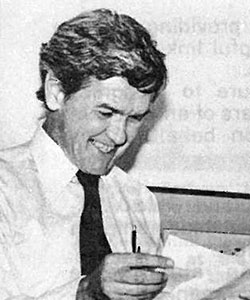First draft done?
Go through it ask ask yourself the following seven questions. When you're done, you have a second draft that is more engaging and effective.
1) Is Your Headline Irresistible?
Your headline is the first thing people see, and it needs to do three things:
- Catch Attention: Make it stand out.
- Spark Interest: Entice readers to learn more.
- Encourage Engagement: Drive them to scroll down.
Spend time perfecting your headline. It can make or break your entire piece.
2) Did You Follow "The Rule of One"?
Focus your copy on a single, compelling idea.
- designed with one customer in mind
- making one specific promise
- telling one story
- having one call to action (CTA)
Writing to one person with one clear message makes your copy more powerful and persuasive.
3) Did You Simplify?
Simplicity makes it easy for your prospect to understand your message and take your suggested action. Look for opportunities to:
- Shorten Long Words: Use straightforward language.
- Simplify Complex Sentences: Break them into smaller, more digestible pieces.
- Condense Extensive Paragraphs: Keep paragraphs concise and to the point.
The simpler and clearer your copy, the more likely it is to resonate with your audience.
4) Did You Answer Objections?
Identify all potential objections your prospect might have. Then, review your copy to ensure it addresses:
- Common Concerns: Turn them into selling points.
- Specific Doubts: Provide clear and reassuring answers.
By handling objections within your copy, you remove barriers to conversion.
5) Is Your CTA Compelling?
Your Call to Action (CTA) should clearly tell prospects:
- What They Get: Highlight the benefit.
- What to Do Next: Provide clear instructions.
- Why to Act Now: Create a sense of urgency.
Ensure every CTA in your copy meets these criteria to drive immediate action.
6) Did You Review the Copy’s Flow?
Your copy should guide the reader smoothly from the beginning to the end. Avoid:
- Abrupt Transitions: These can jolt readers out of the experience.
- Confusing Sentences: Clarity is key to maintaining interest.
- Disjointed Paragraphs: Each paragraph should naturally lead to the next.
A seamless flow keeps your readers engaged and moving forward, making them more likely to convert.
7) Did You Check for Errors?
Before anything else, ensure your copy is flawless. Scrutinize it for:
- Grammar Mistakes: Poor grammar can undermine your credibility.
- Spelling Errors: Misspelled words can distract and confuse your readers.
- Structural Issues: Ensure your sentences and paragraphs are well-structured.
Publishing error-free content is non-negotiable. Faulty copy can turn potential customers away faster than anything else.
Use this 7-step checklist to take your first draft to a new level. Check for errors, ensure a smooth flow, simplify your language, craft an irresistible headline, focus on one main idea, eliminate objections, and create compelling CTAs. Each step brings you closer to copy that not only captivates but also converts.







